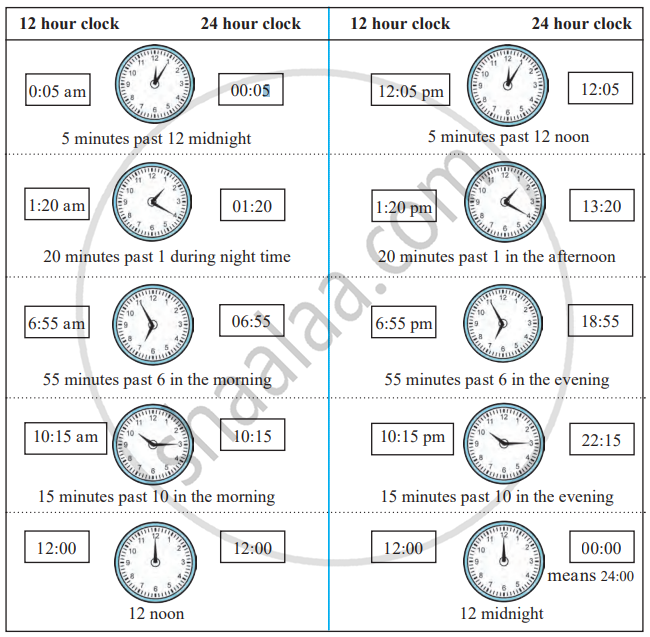Topics
Roman Numerals
Number Work
Addition and Subtraction
Multiplication and Division
Fractions
Angles
Circles
Multiples and Factors
Decimal Fractions
- Decimal Fractions
- The Decimal Number System
- Concept of Tenths, Hundredths and Thousandths in Decimal
- Concept of Place Value
- Use of Decimal Fraction
- Writing Half, Quarter, Three-quarters and One and a Quarter in Decimal Form
- Addition of Decimal Fraction
- Subtraction of Decimal Fraction
- Decimals Used for Measurement
Measuring Time
Problems on Measurement
Perimeter and Area
Three Dimensional Objects and Nets
Pictographs
Patterns
Preparation for Algebra
The 24-Hour Clock System
The 24-hour clock system is used to eliminate the division of the day into ante meridiem (a.m.) and post meridiem (p.m.). This system is widely adopted in timetables for trains, planes, buses, and long-distance boat journeys, ensuring clarity and avoiding confusion.
In this method, instead of restarting the count from 1, 2, 3 after 12:00 noon, the hours continue sequentially as 13, 14, 15, ..., up to 24.
Key features of the 24-hour clock system include:
- Unlike traditional analogue clocks with hands, digital clocks display time using only numerical values.
- 6:20 a.m. is displayed as 06:20.
- 6:20 p.m. is displayed as 18:20.
- 23:59 represents 59 minutes past 23:00 (11:00 p.m.).
- 00:00 signifies the completion of 24 hours, marking the beginning of a new day.
- On a 12-hour clock, this moment corresponds to 12:00 midnight.
Study the following table to see how different times of the day are shown in the 12-hour and 24-hour clocks. 
If you would like to contribute notes or other learning material, please submit them using the button below.
